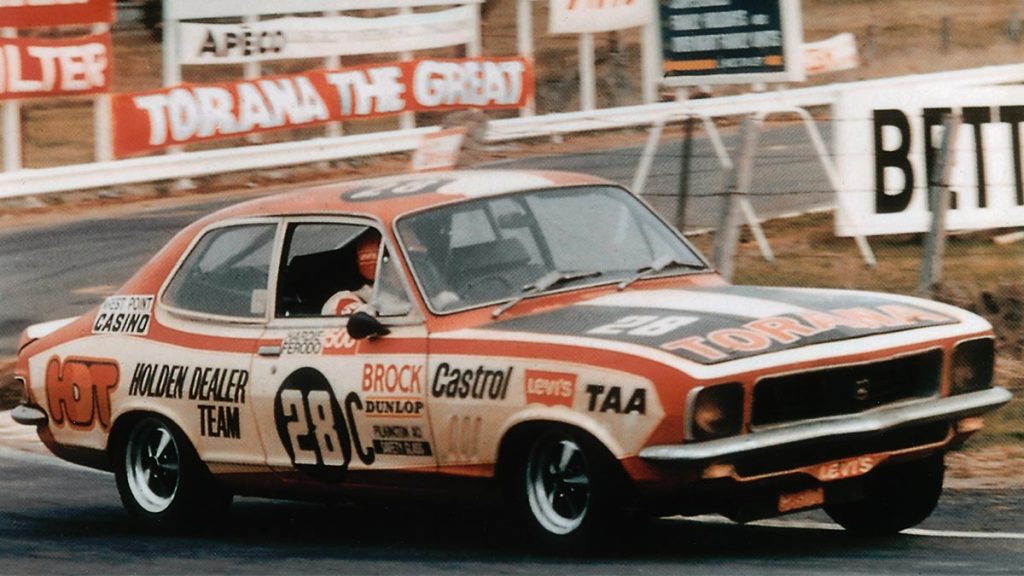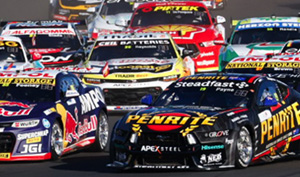THE weather forecast for this weekend’s Repco Bathurst 1000 suggest the 2022 edition will be one of the wettest runnings of ‘The Great Race’ on record.
On Wednesday, the Bureau of Meteorology anticipated rain across all four days of Supercars running at Mount Panorama, culminating in a forecast of 20 to 35 millimetres of rain over the course of Sunday.
If that comes to pass, it would rocket this year’s race to the top of the list of wettest Bathurst 1000s.
WEATHER: The forecast across the 2022 Repco Bathurst 1000 race weekend
ENTRY LIST: Every car and driver in the 2022 Repco Bathurst 1000
SCHEDULE: Bathurst 1000 track schedule for every category
WIN TICKETS: Enter here to win Gold Coast 500 tickets and V8 Sleuth Superstore gift vouchers

No.5 – 1974 Hardie-Ferodo 1000
13.6mm of rain on race day
John Goss and Kevin Bartlett’s upset victory came in a race that was held in largely wet conditions, aided by a set of schmick Goodyear wet tyres generously offered by Allan Moffat for the final stint..
The winning XA Falcon Coupe was the last of the leading contenders standing after a gruelling 163 laps made even more so by the rain.
Jim Richards, partnered by fellow Kiwi Rod Coppins, demonstrated his exceptional wet-weather skills by splashing to third place in his first ‘Great Race’ start, but he’d seen the dangers of the conditions first-hand.
Richards had been in a battle for third that ended when Rod McRae’s Torana aquaplaned off Conrod Straight and folded itself around a tree…

No.4 – 1996 AMP Bathurst 1000
13.8mm of rain on race day
Best remembered for Craig Lowndes and Greg Murphy’s triumph, the 1996 race started in dire conditions.
Rain fell steadily throughout the lead-up on race morning and continued after the lights went green.
The conditions contributed to Mark Larkham’s race-ending crash on Conrod Straight on Lap 4, as well as the multi-car crash in the same place behind the Safety Car one lap later.
The Holden Jackaroo remained out on the track for several laps after the crashed cars were cleared, waiting for the weather to ease and for a large amount of standing water to be cleared.
The rain eventually ceased during the first hour and the bulk of the race was held on a largely dry track.

No.3 – 1972 Hardie-Ferodo 500
14.5mm of rain on race day
Part of the legend of Peter Brock’s first ‘Great Race’ triumph concern the rain that fell during the final 500-mile Bathurst enduro.
As with future mentee Lowndes’ first win, the conditions dried out towards the end of the race, but the ‘King of the Mountain’s path to victory began in the wet early stages.
Famously, Holden Dealer Team chief Harry Firth put Brock’s car on soft hand-grooved Dunlops for the start of the race while rally star Colin Bond’s was given harder hand-grooved Dunlops on the front and Goodyear wets on the rear.
The move proved pivotal to the outcome: Bond rolled out of the race in the early stages after aquaplaning at Sulman Park, while Brock battled Allan Moffat’s GTHO Falcon for the lead until the big red Ford briefly slid off at the same spot.

No.2 – 1992 Tooheys 1000
16mm of rain on race day
The 1992 edition didn’t start in wet conditions, but it sure ended in them!
Steady rain set in during the early stages, triggering a series of incidents and accidents – eventual winner Mark Skaife even hit the Pace Car during a Safety Car period called when the weather was at its worst.
The weather lifted for a few hours before returning with a vengeance on Lap 144, causing a series of crashes that prompted officials to red-flag the race and end it prematurely.

No.1 – 2000 FAI 1000
20.8mm of rain on race day
The first ‘Great Race’ of the new millennium sets the benchmark for the wettest Bathurst 1000 to date.
Rain fell throughout the lead up, a brief window of blue skies during qualifying representing the only proper dry-track running of the weekend.
The murky conditions combined with a bumper 54-car field and muddy outfield produced a total of 13 Safety Car periods – still a race record.
Rainfall data courtesy of the Bureau of Meteorology.




